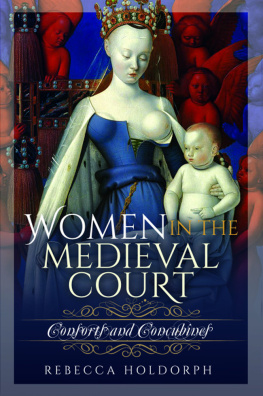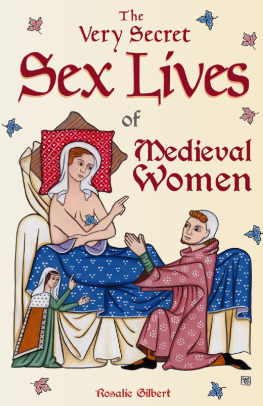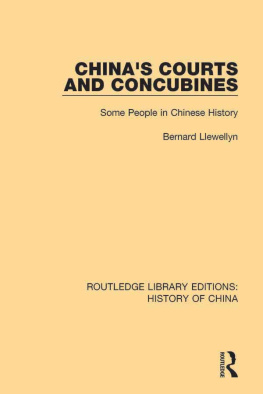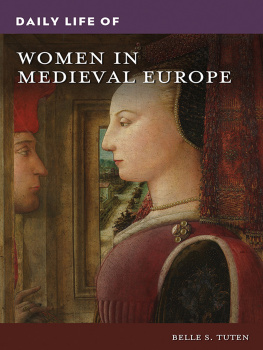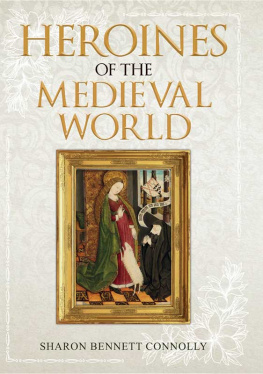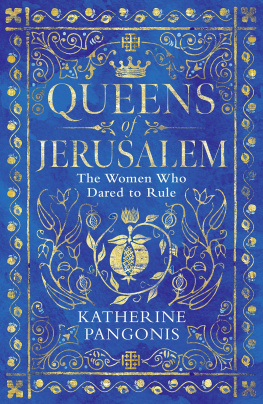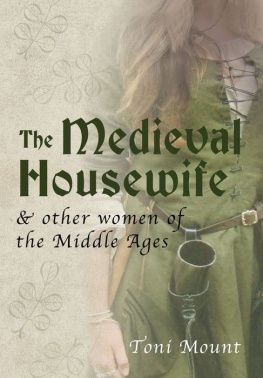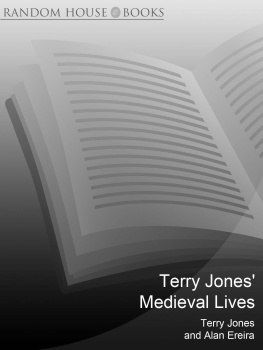
WOMEN IN THE MEDIEVAL COURT
WOMEN IN THE MEDIEVAL COURT
CONSORTS AND CONCUBINES
REBECCA HOLDORPH
First published in Great Britain in 2022 by
PEN AND SWORD HISTORY
An imprint of
Pen & Sword Books Ltd
Yorkshire Philadelphia
Copyright Rebecca Holdorph, 2022
ISBN 978 1 52673 981 0
eISBN 978 1 52673 982 7
mobi ISBN 978 1 52673 982 7
The right of Rebecca Holdorph to be identified as Author of this work has been asserted by her in accordance with the Copyright, Designs and Patents Act 1988.
A CIP catalogue record for this book is available from the British Library.
All rights reserved. No part of this book may be reproduced or transmitted in any form or by any means, electronic or mechanical including photocopying, recording or by any information storage and retrieval system, without permission from the Publisher in writing.
Pen & Sword Books Limited incorporates the imprints of Atlas, Archaeology, Aviation, Discovery, Family History, Fiction, History, Maritime, Military, Military Classics, Politics, Select, Transport, True Crime, Air World, Frontline Publishing, Leo Cooper, Remember When, Seaforth Publishing, The Praetorian Press, Wharncliffe Local History, Wharncliffe Transport, Wharncliffe True Crime and White Owl.
For a complete list of Pen & Sword titles please contact
PEN & SWORD BOOKS LIMITED
47 Church Street, Barnsley, South Yorkshire, S70 2AS, England
E-mail:
Website: www.pen-and-sword.co.uk
Or
PEN AND SWORD BOOKS
1950 Lawrence Rd, Havertown, PA 19083, USA
E-mail:
Website: www.penandswordbooks.com
Introduction
In early 1077, the Holy Roman Emperor Heinrich IV stood bare-headed in the snow outside a fortress called Canossa set atop a rocky outcrop in northern Italy. He had made the dangerous crossing over the winter Alps to see the man inside the fortress, Pope Gregory VII, in a time of desperation. Heinrich and Gregory had been locked in conflict for several years, and when the pope finally excommunicated Heinrich, his nobles had enough. They informed Heinrich he would need to have his excommunication lifted or lose his throne. Inside Canossa, Gregory was being hosted, protected and advised by Canossas ruler the ruler of all Tuscany and one of the most powerful nobles in Europe. Her name was Matilda. When Heinrich was finally allowed inside the fortress after three days of humiliation in the snow, it was she who admitted him. When he was permitted to bow before the pope and beg forgiveness, it was in her court that he prostrated himself. When Heinrich took up arms against the pope once more, it was her army that defeated him, with Matilda herself in command. Matildas defeat of Heinrich on the battlefield, in medieval halls of power, eventually in the public imagination was a defining moment of medieval history.
Few of us have heard of Matilda of Tuscany. She was unknown to me before I began researching this book. To me, she epitomises the reasons why we study medieval women. Even as society recognises the importance of womens history more and more, the dominant narrative is one of exceptional women who managed to navigate their society to achieve positions of power far outside the ordinary. For every Eleanor of Aquitaine, it seems there were dozens of kings, dukes, popes, and bishops engaged in the conflicts of their day.
The reason this is the case is that historians still rarely look for the women. But when we do, they are easy to find. They step out of the woodwork of history, ready to take their place. They are less clearly defined than many of their male counterparts, a result of male bias in surviving records. This is evidence of the patriarchal society in which they lived, which did its best to deny them a voice or identity beyond wife or mother. But the more we look, the more we find them. The more we understand of their contexts of their conflicts, goals, successes, failures the more these women begin to emerge as powerful, independent actors in their own rights. A new picture begins to emerge of women who dealt with enormous challenges and pressure, but who were not without strength, not without independence, and certainly not without power. In this book, we will meet some of them.
How do we study medieval women? It is not difficult to find documents dating from the Middle Ages. Literally millions survive they can even be purchased on eBay. The problem is not one of quantity, but of quality. The sorts of documents that families or governments saved to pass down to future generations were usually legal or financial: land grants, wills, financial accounts, court records. By and large, medieval women did not exist as separate legal entities. Their roles are often erased because the surviving documentary record reflects the activities from which women, simply because they were women, were barred.
Other types of sources discuss women more often, but they bring issues of interpretation. Religious writers such as Thomas Aquinas who described women as defective and misbegotten had much to say about them. Little of what they say is good; unsurprising given the churchs distrust of women and their dangerous sexuality. Medieval chroniclers, men who created the historical record of their time, usually focused on their fellow men, but they discussed women when their paths intersected with great events. Many chroniclers, especially in the early Middle Ages, were also religious men, however, so much of their work requires careful interpretation.
But the fact that so many men had so much to say about women speaks volumes: if women were behaving in the ways that these men advocated, would there have been a need to spill so much ink on the subject? The sheer volume of anti-woman work produced suggests women everywhere, at all levels of society, occupied a place of power that was far from what these men considered the ideal.
Of course, there are still ways of researching womens history in the Middle Ages. Reading between the lines of official documents does much to illuminate womens lives. Some women were independent and powerful enough to leave behind their own legal records. From time to time, important sets of documents have survived through accidents of history. Even more rarely, womens own writing survives. In the twelfth-century, troubadour Marie de France created romantic lyrics that were well known in her own time; the Byzantine princess Anna Komnenes Alexiad was a powerful assertion of her own power, as well as one of our best surviving sources of the First Crusade.
Historians generally use a combination of evidence for womens lives. Legal and financial records can be of great use. Letters, when they survive, are helpful, though most letters are formal documents written by scribes, created with the understanding they might be kept and read publicly. As such, the contents rarely tell us much about the personal views of the sender, but may reveal more of a sense of how that person wished to be perceived. Art, monuments and tombs, and literature also offer clues to how women wished to be remembered.
Chronicles, the history books of the Middle Ages, mention women who played roles in the crucial happenings of their time. This can be useful, but their words are best taken with a grain, sometimes a shaker, of salt. For medieval writers, the truth did not always mean an accurate depiction of events precisely as they occurred. For one thing, many chronicles were commissioned by powerful families, with the expectation that the writer would depict members of the family men and women in a positive light. For another, many writers offer a didactic interpretation of events, with the goal of revealing the universal truths and divine plans that underpinned them. Most considered it reasonable to amend or embellish their telling of events to illuminate those truths.
Next page
